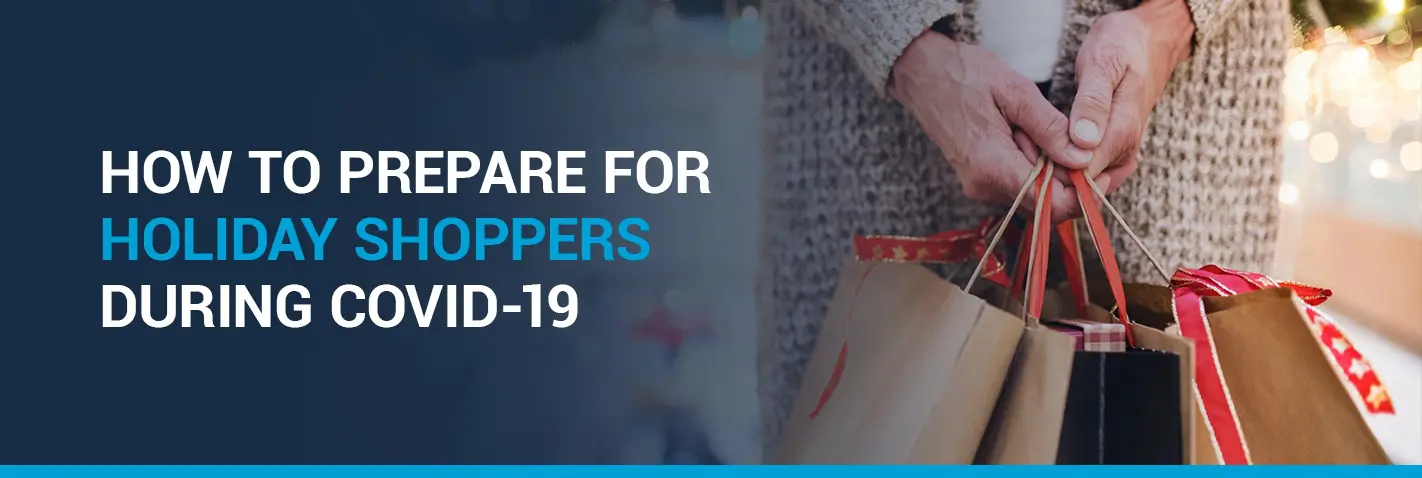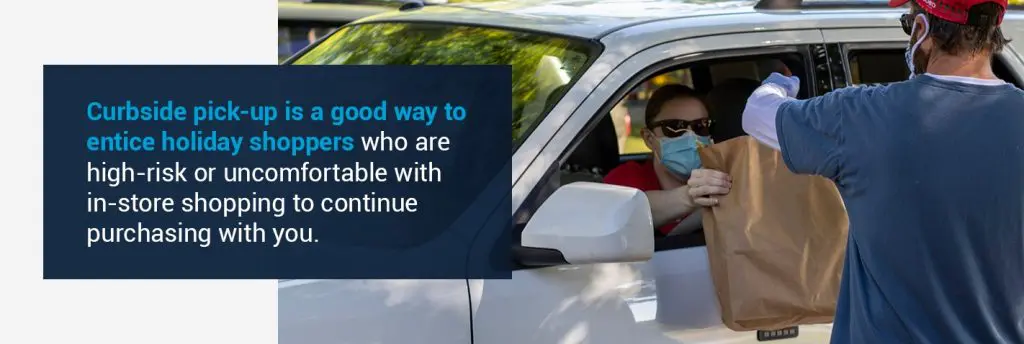

Table of Contents
The 2020 holiday shopping season is here, and it’s unlike any other. Mindful preparation is essential for the health and safety of your employees and customers. This year has prompted many shoppers to consider what matters to them, opting for smaller, intimate gatherings and sentimental gifts over exorbitant purchases. They are eager to shop at establishments with similar values. One holiday shopping survey shows 57% of consumers feel more inspired to shop with a business that has supported staff and customers during the COVID-19 crisis. The same study reports that more than 60% of consumers plan to minimize in-store shopping, citing their concern for retail workers as a leading cause.
Though in-store crowds will likely be smaller and more staggered, there are steps you can take to optimize the shopping experience in a way that encourages social distancing and safe practices while still promoting your products. Here are six steps for safer holiday shopping during the COVID-19 outbreak.
Following all recommended and required health and safety guidelines are the most essential step your business can take this holiday season. To make it easier, consider selecting a COVID-19 officer who can identify critical areas and facilitate changes. Your COVID-19 officer will also be in charge of communicating all relevant workplace adjustments to employees. Work with store management across departments to examine existing employee policies regarding sick time and compensation and see what flexibility you can introduce to encourage a “health first” attitude.
Establish a list of health and safety standards your store aims to uphold for customers and employees. Examples include:
Once your health and safety protocols are in place, stay vigilant about changing conditions in your local community. Adjust your plans as needed. Be aware of spikes in COVID-19 cases, and take steps to ensure sick staff stays at home.
In addition to monitoring how many shoppers enter the store, you can also adjust your business hours to suit your specific needs. Some stores have extended shopping hours to discourage large crowds and allow holiday shoppers more time to browse without congregating. Other stores have found better success shortening business hours to minimize the amount of exposure their employees undergo throughout a shift. You also have an option to designate specific shopping hours for vulnerable populations. If you operate a small store or live in a high-risk area, consider allowing customers to schedule shopping appointments. This is a great way to keep in-store contact low while still fostering valuable customer relationships.


If you don’t currently offer customers an option to pick-up their orders outside the store, there is no better time to start. In 2020, half of the consumers plan to use curbside or contactless pick-up for holiday shopping more than they did in 2019. Nearly 80% of shoppers say the option for contactless pick-up is important. Curbside pick-up is a good way to entice holiday shoppers who are high-risk or uncomfortable with in-store shopping to continue purchasing with you.
Ensure successful curbside pick-up with these steps:
Another method that promotes safe shopping is optimized window shopping. In the past, window shopping simply meant browsing items for sale without much intent to purchase. In the era of COVID-19, it’s an innovative way to attract customers while maintaining safety protocols. Stores with optimized window shopping have rearranged displays, so passersby can see items from outdoors and scan QR codes if they’re interested in buying.
Here are some tips for optimizing your store for window shopping:


One of the most significant COVID-19 holiday shopper trends in 2020 will be the amount of online-only browsing and shopping. According to a Nielsen survey, there has been a 61% increase in e-commerce shopping trips since the pandemic began. Make sure your online shopping platform is up and running. If you own a small store or have no e-commerce options available, consider utilizing your social media channels to list top-selling items and holiday promotions. Then, encourage customers to call the store and place an order for contactless pick-up or local delivery.
While many shoppers might be missing the Christmas shopping experience — holiday music overhead and colorful decorations all around — many stores are creating memorable virtual experiences to entice shoppers this year. Retailers like Sam’s Club and Macy’s have implemented VR shopping experiences to help consumers feel like they’re getting the holiday treatment. Leverage your online platform to create virtual content to connect you with consumers, like behind-the-scenes videos, a “history of” series about your business, how-to guides for bestselling items or holiday tutorials featuring your products.
As you make adjustments for the upcoming shopping season, communicate all relevant changes to customers to minimize confusion and frustration. Let them know early and often about policy changes, mask requirements, social distancing guidelines and online offerings.
Use as many of the following advertising methods as you can:
While communicating with customers, practice patience and understanding. Let them know you’ve made changes in the best interest of your staff and to keep shoppers like them safe. Use optimism, hope and humor to remain authentic and remind shoppers that we are all navigating the situation as best we can.
Shoppers are eager to continue celebrating holidays and shopping for Christmas during the pandemic. These steps can help you keep shoppers and employees safe all season long while continuing to make sales and grow your customer base. A Traf-Sys people counting system will allow you to maintain control over your store with automatic counting. When you pair it with our VisiCount software, you’ll also get valuable insights from your collected traffic data to help you make safer decisions for all involved. Request a free quote today!